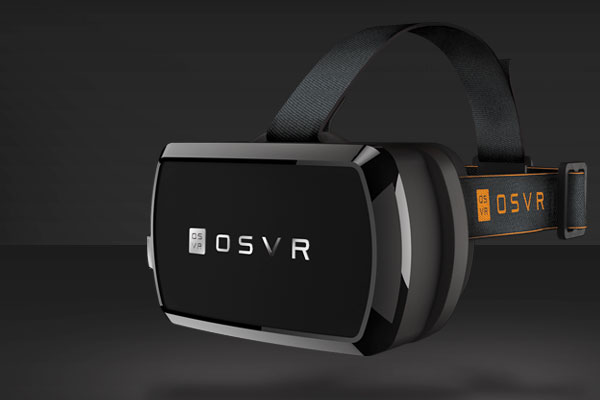Open Source Virtual Reality, a platform that aims to unify virtual reality input devices, games and output, and Leap Motion, a company that has established itself in the development of motion-tracking hardware, on Wednesday announced what may be a compelling way to control movements in a virtual reality environment.
Despite spending years — decades, in many cases — navigating digital worlds with the “A, S, D, W” keys and computer mice, many in the video gaming community are wary of doing so when there are VR displays strapped to their faces. With gamers poised to become VR early adopters, helping to drive the technology into the mainstream, developers have been working hard to iterate on existing control schemes and conceive new ones.
HTC and videogame publisher Valve intrigued the gaming world at the 2015 Game Developers Conference with their Vive VR headset’s nunchuck controller and body-tracking lighthouses. The solution proposed by OSVR and Leap could be just as interesting.
Seeing the Hand in Front of the Face
With Leap Motion’s latest hardware offering, the VR controls are embedded in a faceplate that can be attached to an OSVR-compatible headset, according to Leap Motion.
“Developers will be able to purchase the Hacker Dev Kit bundled with the OSVR faceplate that includes our technology, or they can buy the OSVR faceplate with Leap Motion as a standalone piece of hardware,” Leap Motion told LinuxInsider in a statement provided by spokesperson Eva Babiak.
Though the partnership is critical in the development and implementation of its motion-tracking hardware for VR, Leap Motion intends to support more headsets in the future.
“Working with OSVR to embed our technology benefits developers and the end user,” the company said. “Developers can write code for a single platform that works across multiple hardware devices, and consumers get a consistently smooth experience.”
Leap Motion’s OSVR faceplate will be bundled in OSVR’s Hacker Dev Kit when the hardware ships in June. The faceplate also will be made available as a standalone peripheral.
“Modularity is one of the key benefits of OSVR,” Leap Motion noted.
The Open Source Route
In working with OSVR, Leap Motion joins hardware and software heavyweights including Bosch, Gearbox, HMD, Intel, Razer, Sixense, Techland, Ubisoft, Unity and Unreal. OSVR counts more than 50 hardware and software partners.
Excluding Sony’s Morpheus headset, the power players in the VR sector have been opening up their application programming interfaces to anyone who’d like to take a crack at developing for the platforms.
Taking the open source route to market allows a product to benefit from a big community of developers, because there is low overhead in creating hardware and content, according to Ira Michael Blonder, president of IMB Enterprises.
Going open source also exposes products to security risks, he said.
“When something is open source, it’s open to the public and everyone knows about the code,” Blonder told LinuxInsider, “and the ability of nefarious individuals to potentially to do something malicious … increases, because nothing is proprietary and out of the public view.”
On the flip side of the security coin, having a community of developers working with open source code can cultivate a massive force of white hat engineers who know the software intimately and can help to quickly dispatch hacks and malicious software, according to Blonder.
To Market, to Market
Despite the amount of weight being thrown behind OSVR and other VR efforts, the dream of a headset with an accompanying substantial library of games remains in the hands of developers.
Gamers are awaiting a killer app — such as a title from Valve with a “3” on the end — to sell them in full on VR.
However, VR developers have to look down the road, IMB Enterprises’ Blonder said — beyond the first wave of early adopters in the gaming community, and on to the casual consumers who pop into a Best Buy on a Saturday afternoon.
“We need apps,” he said. “We need a lot of things to run on this hardware, so that the market is interested.”












































